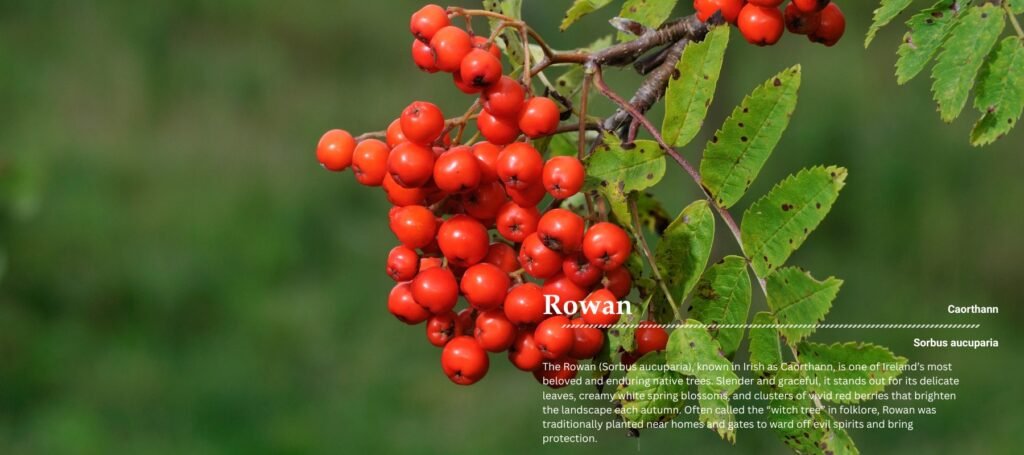A Feast for Pollinators and Birds
Rowan begins its cycle of generosity in spring, when its creamy white flower clusters bloom in abundance. These blossoms are rich in nectar and attract bees, hoverflies, and countless other pollinators, giving early sustenance to insects emerging from winter.
By late summer, the flowers transform into clusters of bright red berries. These berries are a vital food source for birds such as thrushes, blackbirds, and waxwings. As they eat, they disperse Rowan seeds across the land, ensuring that new trees take root naturally. In this way, the Rowan sustains wildlife and helps regenerate the landscape year after year.
A Tree of Resilience and Adaptability
Few trees match the Rowan’s adaptability. It thrives in a wide variety of conditions, from rich lowland soils to rocky upland slopes. It is tolerant of wind, frost, and altitude, making it invaluable in reforestation and hillside planting. In exposed areas, its roots help stabilise the soil and prevent erosion, while its branches offer shelter to birds and insects.
The Rowan’s ability to flourish where other trees struggle makes it a vital part of Ireland’s ecological restoration efforts. It proves that strength can be quiet, and resilience can take many forms.
A Tree Rooted in Irish Myth and Tradition
The Rowan holds a special place in Irish mythology and folklore. It was often seen as a tree of life and protection, its berries believed to carry the power to ward off harm. In Celtic legend, the first woman was said to have been created from a Rowan tree, linking it to themes of creation, vitality, and renewal.
Its wood was also prized, used for walking sticks, tool handles, and charms said to bring good fortune. Many Irish place names and traditions still echo its cultural importance, showing how deeply the Rowan is woven into Ireland’s story.
Planting Hope and Heritage
When you plant a Rowan with Grown Forest, you are adding more than a tree to the land, you are planting a piece of Irish heritage. You are helping to preserve a living tradition of resilience, beauty, and protection that has endured for centuries.
Each Rowan stands as a small guardian of the land, offering food, shelter, and colour through every season. It is a perfect choice for those who want to contribute something meaningful, a tree that belongs, that nurtures, and that reminds us all of nature’s quiet generosity.

